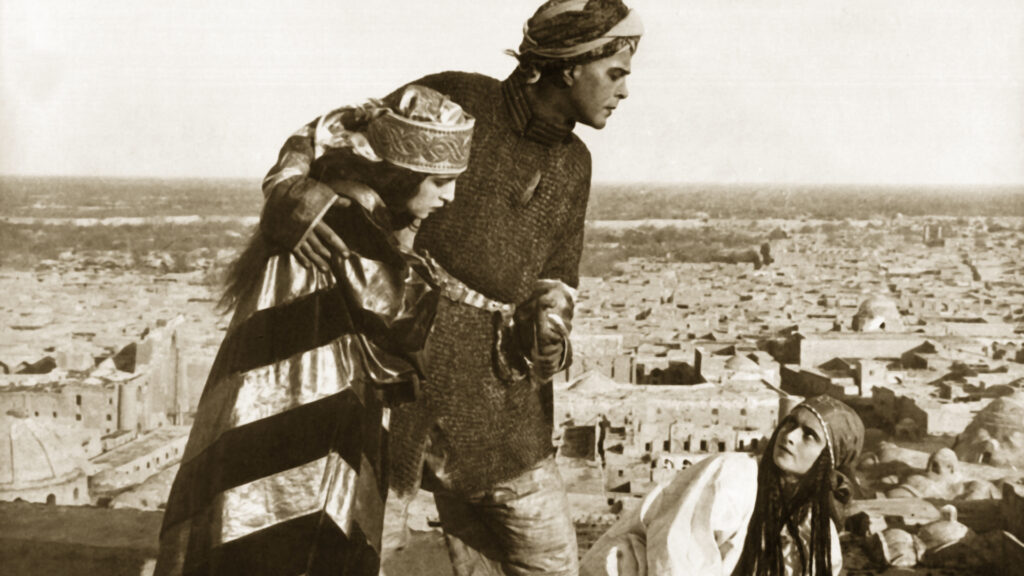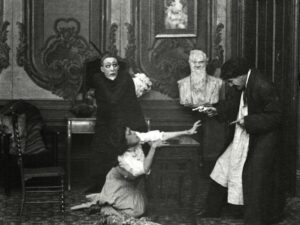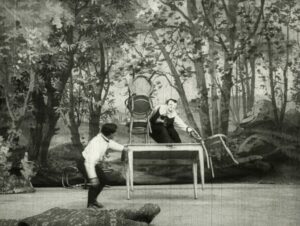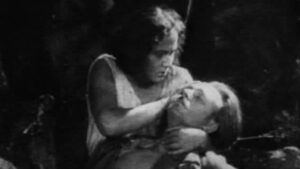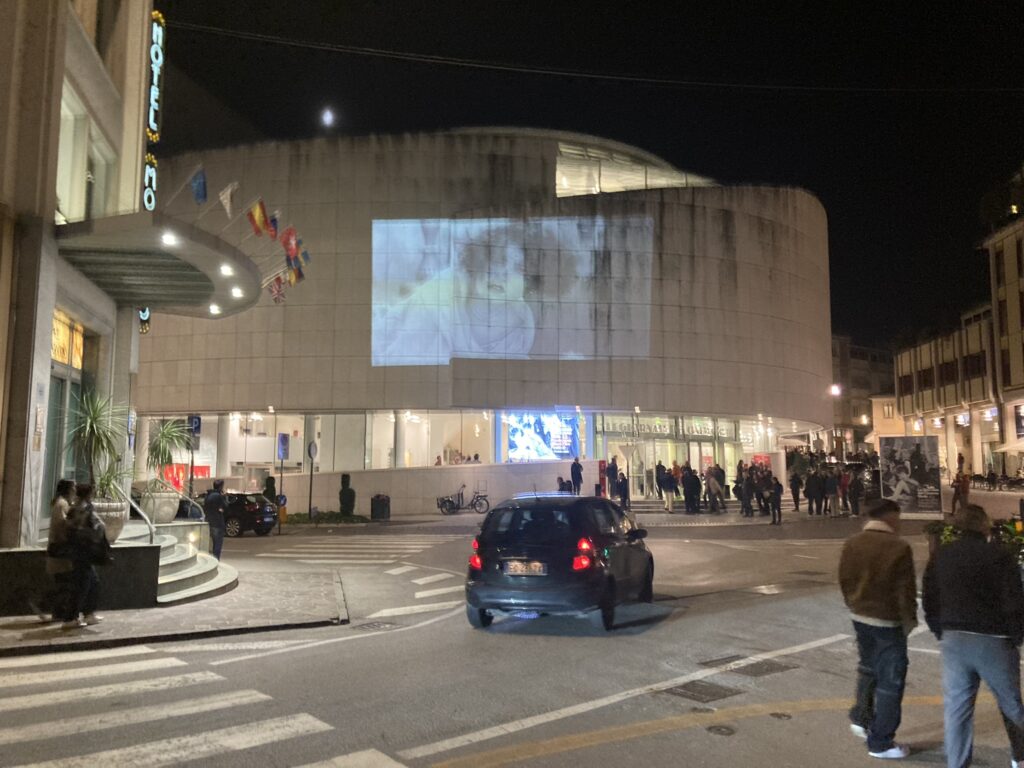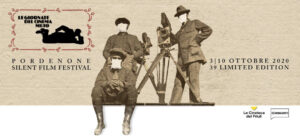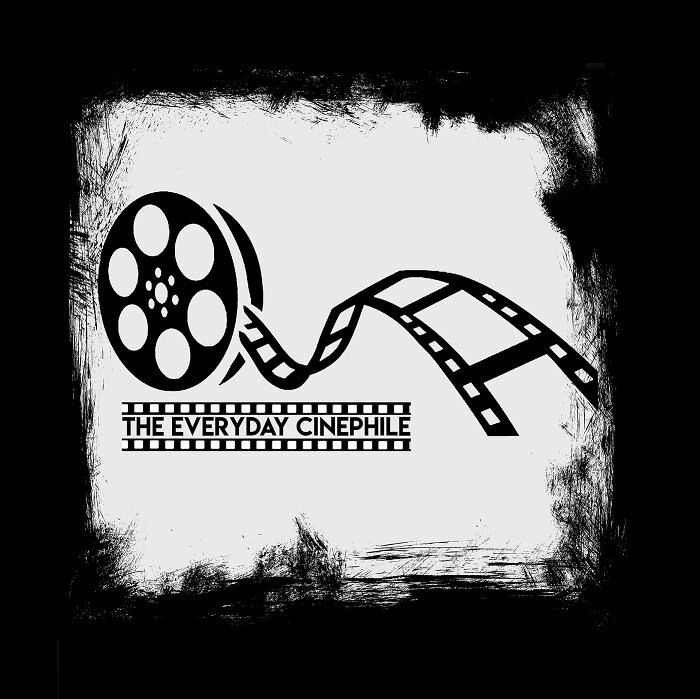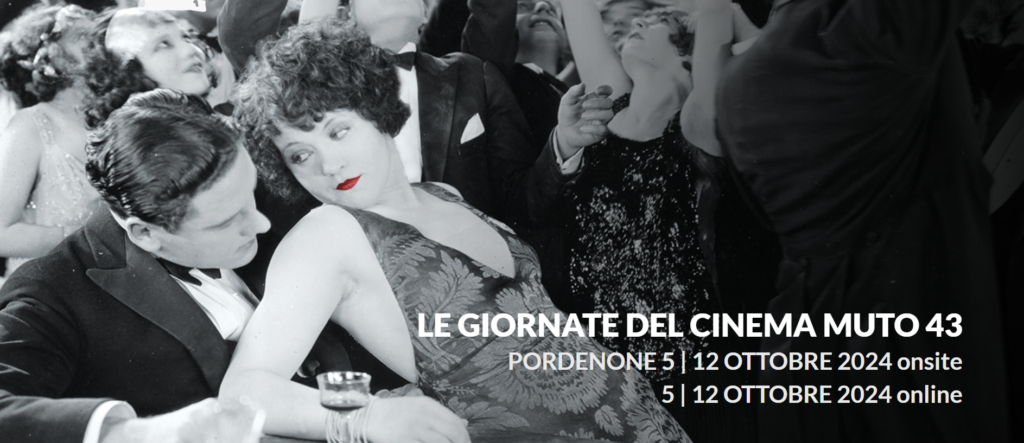
The mark of a great festival experience isn’t measured by the number of films watched or even the quality of those films screened. Instead, a film festival’s greatest benefit is the viewer coming away with a wider perspective and a deepened vigor for discovery. This past week at the 2024 Pordenone Silent Film Festival certainly accomplished that.
The programming covered a wide range of silent films that highlighted the vast array of possibilities explored in the first decades of cinema: Swedish nature documentary films, unidentified fragments from the archives, recently restored Biograph one-reel dramas, rediscovered films from Latin American and Uzbekistan national cinemas, and classics reanimated with grand orchestral scores and accompaniment, just to name a few.
The Minaret of Death (1928)
Some of the highlights weren’t rediscoveries but old classics screened on film with an exceptional live orchestra. Seeing my favorite Harold Lloyd film Girl Shy can’t be topped with a large attentive audience from a heart-wrenching romance to a manic chase that stands among the best in the silent era—or any era. Neil Brand’s new sweeping score for The Winning of Barbara Worth brought out the tenderness of the central romance while blasting with bombast the epic scale of the Western tale.
The two dozen films screened from the Biograph Project proved to be my favorite series. Dozens of one-reel Biograph films directed by D.W. Griffith saw the light of day for the first time with three or four screened to start each morning. To see so many in such a quick succession drove home the vast spectrum of genres and fresh filmmaking techniques of the era that made me question my previously held assumptions of the development of film grammar.
The releases of many more previously unavailable or heavily damaged prints—and restorations of a few already known early Griffith dramas—stand to dramatically shift our understanding of Griffith’s work and Biograph’s role in advancing the language of early filmmaking. The Biograph Project screening filled my brain with questions and made me excited to dive back into the all-too-forgotten early 19th-century film. I’ll make sure to share my discoveries and more thoughts on the topic soon.
D.W. Griffith’s one-reel drama The Devil
Another important rediscovery was the product of several passionate archivists at the National Uzbekistan Film Archive. Screened for an international audience for the first time in decades, these half dozen Uzbek films opened a snapshot of a culture caught between old and new. Heavily influenced by Soviet montage, these films spoke bluntly of the intersection and contradictions between faith, gender, and politics in Uzbek culture. What other films are buried and forgotten in the various outposts around the world for us to rediscover?
A new extremely popular attraction debuting at this year’s festival, Sinne Nomine saw screenings of unidentified shorts and fragments to help archives in their identification. The 2024 Pordenone Silent Film Festival website hosts a Google Doc for each unidentified film screened with crowdsourced information from archivist experts online and in attendance. With a few already identified, this series is film restoration playing out in real-time where everyone has a chance to see and even participate.
Unidentified footage of a vaudeville act found in Sweden
With any large collection of films, not all can be winners. There were a couple of films that didn’t quite hit the right notes, dragged in sections, or betrayed good filmmaking and storytelling. Even in the couple of duds, there was always something to appreciate whether it be a unique glimpse into a certain national cinema, time period, genre, or filmmaker that any audience had experienced in decades.
My few favorite discoveries were spread out across some catching me off-guard. The Forty-First knocked me out on the first day of the festival with a gripping tale of conflicted romance and guerilla warfare in the arid desert of the Soviet Republics. Saxophone Susy electrified that audience with a contagious flapper-era optimism.
Gripping scene from The Forty-First
Even some of the little films proved a pleasant surprise such as the romping sex comedy Folly of Vanity with a random underwater dream sequence straight out of Neptune’s waters. A short on the final night of the festival elicited one of the biggest laughs of the festival as a parading censor in Per La Morale covers up the company’s logo in the final shot of the film to protect us from the indecency of seeing a pig nursing its young.
And while attending in-person with a throng of audience, I still found joy in logging into Letterboxd at the end of the day and reading reviews from those taking advantage of the selection of films screened for the online Pordenone experience. If money grew on trees I’d be back every year in Italy but on my tight budget, there are much worse fates than sharing many future festivals online with fellow dedicated silent film buffs.
The home of the festivities The Teatro Verdi
In total, I saw 81 films: 62 shorts and 19 feature films. I probably won’t remember some of those random shorts stacked into an hour program or the fourth of five feature films I saw in a day. I will remember the respect for the silent image archivists, restorationists, and musicians provided for us silent cinephiles from around the globe in the hallowed Teatro Verdi.
Now when I’m alone scouring crappy 240p prints on YouTube with no music to find the obscure silent treasure, I’ll take comfort knowing people in Pordenone are working behind the scenes to present the next great silent film discovery in the best condition that silent cinema deserves. And that was well worth the reward for my long-awaited pilgrimage to the 2024 Pordenone Silent Film Festival.
